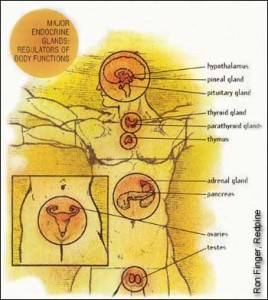What are xenohormones and should we be worried about them in cosmetics?
Organic, natural and "green" ....and now xenoextrogens?
What are “Endocrine Disruptors”?
From the moment of conception, human growth and development is regulated by tiny amounts of biochemicals called hormones. Our bodies manufacture trace quantities of these chemical messengers, which enter our bloodstream and travel throughout our circulatory system, managing our metabolism and controlling the function of specific tissues and organs. Hormones are able to produce an array of sophisticated regulatory signals crucial to human health at part per billion or part per trillion levels in the blood.
Disruption of the human hormone (endocrine) system can cause a broad range of illnesses, including reproductive and metabolic disorders and cancer. There are numerous environmental chemicals that we potentially come in contact with on a daily basis that have been shown to disrupt the endocrine system. Chemicals that disrupt the endocrine system are called endocrine disruptors.
Common Endocrine Disruptors
In October, 2013, the Environmental Working Group (EWG) published a list of 12 common environmental chemicals and toxins that act as endocrine disruptors in human physiology. This means they disrupt hormonal signaling (alter hormonal responses) in the human body. Since hormones act as biochemical messengers and regulators of physiologic function, this can lead to a wide range of physiological problems and it’s interesting to note that most of them impact multiple endocrine organs simultaneously.
 Here is a list of those chemicals:
Here is a list of those chemicals:
-
BPA
-
Dioxin
-
Atrazine
-
Phthalates
-
Perchlorate
-
Fire retardants
-
Lead
-
Arsenic
-
Mercury
-
Perfluorinated chemicals
-
Organophosphate pesticides
-
Glycol Ethers


